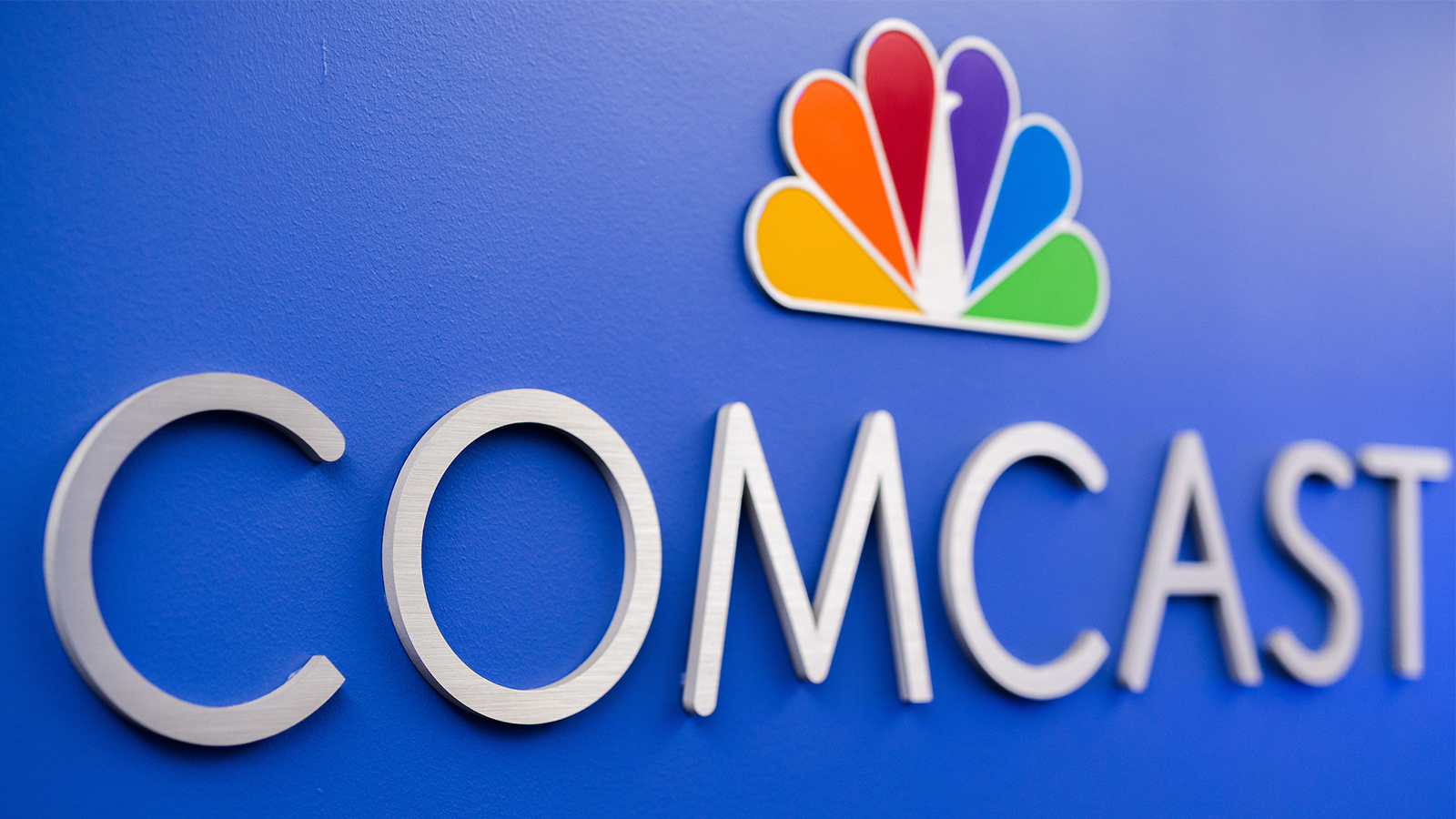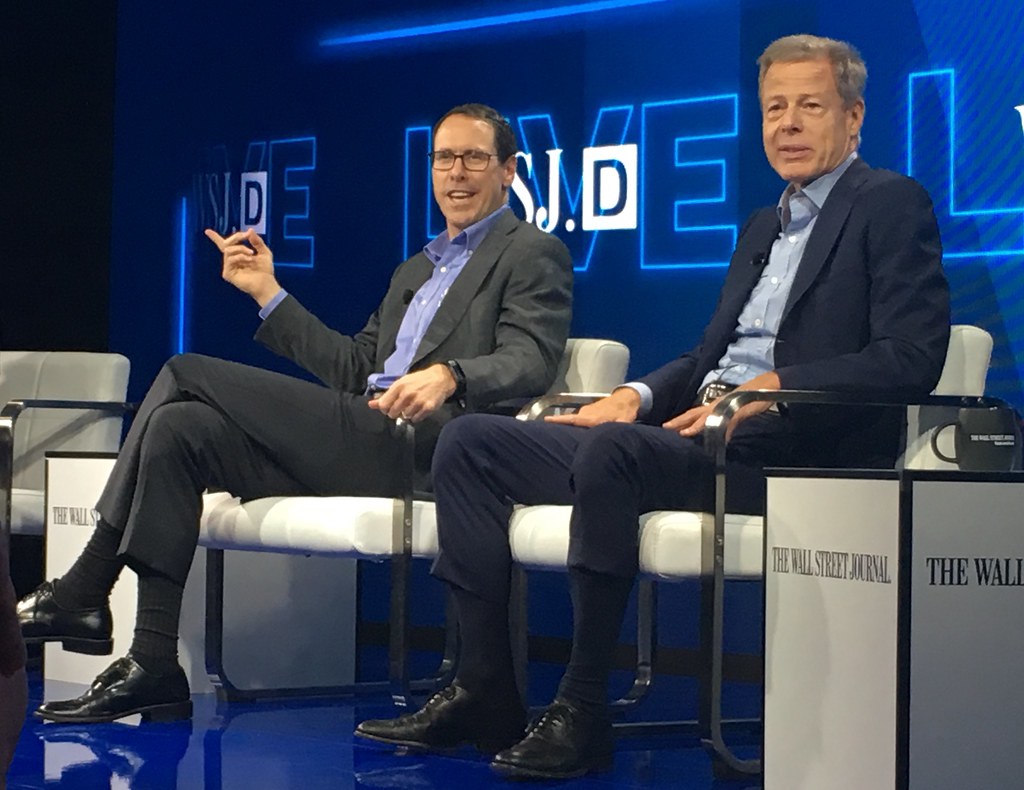
Hollywood, once a vibrant bazaar of ideas and independent collaborations, has undergone a seismic shift over the past two decades. The landscape that writers and producers navigated just 20 years ago, characterized by a competitive marketplace and multiple bidders for creative concepts, has largely evaporated. Today, the industry grapples with an unprecedented level of consolidation, fundamentally altering the way business deals are struck and, in many cases, effectively “prohibiting” the kind of agile, independent joint ventures that once fueled innovation.
The transformation is stark. As Dan Gregor, a writer and producer on Chip ’n Dale: Rescue Rangers and How I Met Your Mother, vividly recalls from the start of his career roughly 20 years ago, when Hollywood looked vastly different: “You used to have a marketplace to sell your concept to. You’d often get multiple offers, and you’d have a bidding war. You could actually negotiate up all of your rates, salaries and others rights based on competition between the studios and buyers.” This dynamic, where competition between studios encouraged diverse partnerships and better terms for creators, has given way to an environment where studios and networks are “functionally the same,” often presenting a “take it or leave it offer.”
This shift isn’t accidental; it’s the direct result of strategic decisions made by powerful industry moguls and the corporations they command. Through a series of colossal mergers and the implementation of restrictive “in-house” mandates, these behemoths have effectively drawn new boundaries around who gets to play in the content creation and distribution sandbox. While not always an explicit prohibition, the systemic outcomes of these strategies have undeniably reshaped the ecosystem, making independent joint ventures a far rarer and more challenging proposition. Let’s explore some of the pivotal moments and strategies that have led to this consolidated reality.

1. **Comcast and NBCUniversal Merger (2011)**One of the earliest and most impactful megamergers that signaled this new era was the combination of Comcast and NBCUniversal in 2011. This deal brought together a colossal telecommunications company with a storied content producer and distributor, setting a precedent for the vertical integration that would come to define the decade. It blurred the lines between content creation and its delivery, consolidating immense power under a single corporate umbrella.
This merger was more than just a financial transaction; it represented a strategic move to control both ends of the media supply chain. By owning both the pipes (Comcast’s internet and cable services) and much of the content flowing through them (NBCUniversal’s film and TV studios, broadcast networks, and theme parks), the combined entity gained unparalleled leverage. This kind of integration inherently reduces the need for external partnerships, as the in-house capabilities expand dramatically.
The integration effectively started to dismantle the traditional marketplace Gregor described, where independent producers could shop their ideas to multiple, truly distinct buyers. With NBCUniversal now nestled within the Comcast empire, the incentives shifted towards internal synergies and cross-promotion, diminishing the competitive bidding environment that previously empowered creators and encouraged a wider array of joint ventures. It was a clear signal of the industry’s direction toward fewer, larger players.

2. **AT&T and DirecTV Merger (2015)**Following in the footsteps of Comcast, AT&T’s acquisition of DirecTV in 2015 marked another significant step in the consolidation wave, particularly in the distribution sector. This deal saw a telecommunications giant absorb a major satellite television provider, expanding its reach into homes across America. It was a move aimed at bundling services and creating a more formidable competitor in the burgeoning entertainment landscape.
The logic behind such a merger was clear: aggregate subscribers and control more avenues for content delivery. However, the consequence for the broader market was a reduction in independent distribution platforms. Where once multiple distinct distributors might have existed, offering varied opportunities for content creators and their potential joint venture partners, AT&T’s expanded empire meant fewer independent players and therefore fewer distinct avenues for external content.
While not directly prohibiting joint ventures, the increased scale and market power of the combined AT&T-DirecTV entity meant that future content acquisition and distribution strategies would likely favor in-house or closely aligned productions. It contributed to the overall trend of fewer independent entities capable of entering into truly competitive joint ventures, instead pushing smaller players into a relationship with a dominant gatekeeper.

3. **AT&T and Time Warner Merger (2018)**Perhaps even more emblematic of the vertical integration trend was AT&T’s subsequent acquisition of Time Warner in 2018. This gargantuan deal brought together one of the largest telecommunications companies with a media conglomerate boasting HBO, Warner Bros. studios, and CNN. It was a bold declaration of intent to control content from creation to consumption, igniting significant antitrust concerns.
This merger explicitly targeted the blurring of lines between producers and distributors. By owning both the pipelines and premium content like HBO, AT&T sought to create a formidable ecosystem that could compete with the likes of Netflix and Amazon. For creators, this meant that a vast array of potential buyers—HBO, Warner Bros. TV, film divisions—were now all under one corporate roof, often receiving mandates to prioritize internal projects.
The implication for joint ventures was profound. If a creator had a pilot that might have once been pitched to various Time Warner entities, and then, if unsuccessful there, taken to other networks, the AT&T merger meant those Time Warner entities were now part of an even larger, more integrated system. The ability to “shop it anywhere outside the Disney family,” as writer Katherine Walczak lamented in a different context, became increasingly difficult when major content creators were swallowed by telecom giants.
4. **Charter, Time Warner Cable and Bright House Merger (2016)**In parallel to the vertical integration plays, horizontal consolidation also reshaped the media landscape, as exemplified by the 2016 merger involving Charter, Time Warner Cable, and Bright House. This deal consolidated three significant cable operators, creating a massive new entity in the distribution space. Such mergers directly reduce the number of competitors offering similar services.
For consumers, this often translated to fewer choices and less competition. For content producers and potential partners, it meant fewer distinct platforms to negotiate with for distribution. If a content creator or a small production company sought a joint venture to distribute their programming through cable, the market had fewer, larger gatekeepers.
This type of consolidation, though focused on infrastructure rather than content creation directly, still had a ripple effect on the overall deal-making environment. It meant that the remaining distributors, now fewer and larger, possessed more market power in negotiations, implicitly limiting the terms and conditions under which joint ventures or licensing agreements could be formed, favoring their own terms over competitive offers.

5. **Disney and Fox Merger (2018)**The acquisition of 21st Century Fox by Disney in 2018 stands as arguably the most defining megamerger of this era, solidifying Disney’s position as an undisputed titan in global entertainment. This monumental deal brought together a vast array of intellectual properties, production studios, and distribution channels, from film and television studios to cable networks and international assets.
This merger had an immediate and palpable impact on the competitive landscape. As Katherine Walczak recounted, after selling her first pilot in 2020, she “couldn’t shop it anywhere outside the Disney family, limiting her choices to FX, Hulu, ABC and Disney+, because her producers had a production deal through ABC Studios.” This illustrates how the consolidation under a single parent company directly restricts the marketplace for creators.
The Disney-Fox deal created a powerful ecosystem where “in-house” content was king, effectively acting as a form of “prohibition” against external joint ventures or even selling content independently. The sheer scale of Disney’s internal operations and its mandate to feed its own streaming platforms and networks meant that projects from outside its immediate family faced immense hurdles, making competitive bidding wars a relic of the past for many.
Read more about: Revisiting Box Office Bombs: How These Cinematic Gems Defied Initial Failure to Become Undeniable Masterpieces

6. **”In-house” Mandates and Their Impact**Beyond the specific megamergers, a pervasive strategy that has effectively “prohibited” certain independent joint ventures is the widespread adoption of “in-house” mandates by consolidated studios and networks. This practice, described by multiple writers in the context, is a direct consequence of the massive roll-ups, where parent companies instruct their various subsidiaries to prioritize content produced by studios they own.
Nick Antosca, an executive producer for Antlers and Chucky, vividly described this phenomenon: “Multiple times in the past two years, I’ve produced or created a show that we’ve taken to the marketplace, and been told by executives at other streamers or networks that they love the project creatively and want to buy it, but they cannot do so because their highest-level bosses have given them a mandate to focus on buying and greenlighting shows ‘in-house’ — meaning, shows produced by studios that are owned by the same parent company that owns their streamer/network.” This is a clear example of a systemic barrier to external deals.
These mandates, while not a formal legal prohibition, function as one in practice. They erase the competitive environment that writers like Antosca and Walczak once relied upon. It means that even if a project is creatively excellent and desired by a network executive, the overarching corporate strategy, driven by the “moguls” at the helm of these conglomerates, dictates that only “in-house” content will be considered. This fundamentally undermines the spirit of independent joint ventures and a truly open marketplace.

7. **Department of Justice/FTC Scrutiny of High-Profile Mergers**The increasing trend of consolidation and its stifling effect on competition has not gone unnoticed by regulators. The Department of Justice (DOJ) and the Federal Trade Commission (FTC) have begun to take a more aggressive stance, signaling that the days of “rubber-stamping iffy deals are over.” This increased scrutiny, while not a prohibition of joint ventures per se, is a direct response to the market conditions created by unchecked mergers that implicitly limit competition and external deal-making.
FTC chair Lina Khan noted in November that “Media and entertainment is an area we’re following closely in part because we were hearing from the writers.” This indicates that the regulatory bodies are responding directly to the outcry from creators whose ability to form competitive deals, including joint ventures, has been severely hampered by industry concentration. The agencies are looking at how consolidation “was ultimately undermining the workers, as well as the viewers.”
Rebecca Allensworth, an antitrust professor at Vanderbilt University Law School, highlighted the “significant risk” that agencies might file lawsuits to block acquisitions like the proposed Paramount-Skydance deal, pointing to “overconsolidation in Hollywood” and a trend “toward concentration that’s problematic.” This regulatory pushback underscores the systemic problem created by powerful entities reducing the marketplace, and while not *prohibiting* joint ventures, it aims to restore a competitive environment where diverse collaborations could once again flourish.
The landscape of Hollywood has been irrevocably altered by these consolidation trends, prompting closer examination of regulatory oversight, historical parallels, and the tangible impact on the industry’s lifeblood: its talent. While the initial wave of mergers redefined market dynamics, the long-term systemic effects reveal an even more profound transformation in how business is conducted, and how even ostensibly ‘joint’ ventures are now structured under the sway of concentrated power.

8. **The ‘Trend Toward Concentration’ and New Merger Guidelines**In response to the pervasive consolidation, regulatory bodies like the Department of Justice (DOJ) and the Federal Trade Commission (FTC) have signaled a significant shift in their approach to scrutinizing proposed mergers. This represents a more aggressive stance, moving away from merely “rubber-stamping iffy deals,” as they acknowledge the cumulative effect of a “trend toward concentration” within industries, rather than focusing solely on the immediate market share of individual transactions.
These agencies, in July, jointly released fresh merger guidelines designed to serve as a roadmap for regulatory review. Crucially, these guidelines account for acquisitions in industries already undergoing consolidation. They direct regulators to consider situations where an industry has moved from having many competitors to becoming concentrated, thereby indicating a greater risk of harm because new rivals are less likely to emerge and offset the decrease in competition caused by a proposed deal.
The new guidelines also explicitly address dynamics related to vertical integration, where companies at different levels of the supply chain, such as content producers and distributors, combine. Regulators are now tasked with assessing whether such roll-ups prevent the “emergence of new competitive threats over time.” This reflects a deeper understanding of how these powerful entities can create self-preferential agreements and reduce overall market vitality, a direct response to the concerns raised by creators and industry observers.
FTC Chair Lina Khan underscored this heightened vigilance in November, stating that “Media and entertainment is an area we’re following closely in part because we were hearing from the writers.” This feedback from the creative community has clearly influenced the regulatory agenda, highlighting how consolidation “was ultimately undermining the workers, as well as the viewers.” This direct acknowledgment from top regulators demonstrates a growing recognition of the broad societal impact of unchecked market power.

9. **Historical Precedent: Brown Shoe Co. v. United States**To fully grasp the contemporary regulatory posture, it’s insightful to consider historical legal precedents that inform current antitrust thinking. A pivotal case, Brown Shoe Co. v. United States from 1962, offers a critical lens through which to view today’s consolidation trends, particularly in its emphasis on the “trend toward concentration” rather than just the immediate scale of a single merger.
In this landmark case, the Supreme Court upheld a lower court’s decision to block a merger between Brown, the fourth-largest shoe manufacturer and third-largest retailer, and Kinney, the eighth-largest shoe retailer. Despite the merged entity having only a 5% share of the retail market, the deal was deemed to violate antitrust laws on two fronts: the vertical tie between Brown’s manufacturing and Kinney’s retail outlets, and the horizontal combination of their retail operations.
The court’s ruling was groundbreaking because it did not solely focus on the size of the specific merger. Instead, it leaned significantly on the industry’s discernible “trend toward concentration.” The underlying principle established was that a series of horizontal and vertical mergers over time, even seemingly small ones, could cumulatively result in substantial harm to competition. This historical perspective provides a legal framework for the current regulatory focus on the broader pattern of consolidation in Hollywood, signaling that even deals involving smaller players, like the proposed Paramount-Skydance acquisition, could face challenges if they contribute to an already concentrated market.
This precedent is highly relevant today as Hollywood experiences a similar succession of mergers. The combined production businesses of Paramount and Skydance, for instance, could bolster Paramount’s role as a distributor, especially through its streaming platform Paramount+. The industry, much like the shoe market of the 1960s, is heading toward a structure that incentivizes dual roles as content suppliers and distributors, raising concerns that echo the very issues addressed in the Brown Shoe ruling.

10. **Erosion of Talent Working Conditions**The systemic consolidation has had a particularly harsh and immediate impact on the working conditions and bargaining power of talent within the industry. As the number of truly independent buyers dwindles, creators find themselves facing fewer bidders for their work, a stark contrast to the competitive environment of two decades ago.
Katherine Walczak, a writer on The Flash, shared her experience with the Federal Trade Commission, lamenting that “corporate consolidation discourages competitive wages.” After selling her first pilot in 2020, she discovered she “couldn’t shop it anywhere outside the Disney family, limiting her choices to FX, Hulu, ABC and Disney+, because her producers had a production deal through ABC Studios.” This effectively eliminated any potential bidding war, which she noted “used to happen in the 90s.”
Walczak’s testimony vividly illustrates how the marketplace, which once determined the value of a creative product through competition, no longer functions in the same way. When major networks and studios are owned by the same parent company, even if multiple internal entities express interest, they “wouldn’t have competed against one another since they are owned by the same parent company.” This leaves creators in a position where the dominant entity can dictate terms, severely undermining their ability to negotiate fair compensation and rights.
Similarly, Nick Antosca, an executive producer for Antlers and Chucky, recounted multiple instances where executives at other streamers or networks expressed creative enthusiasm for his projects but were unable to acquire them. The reason was a clear corporate mandate from their “highest-level bosses… to focus on buying and greenlighting shows ‘in-house’ — meaning, shows produced by studios that are owned by the same parent company that owns their streamer/network.” This ‘in-house’ directive, a direct consequence of consolidation, acts as a de facto prohibition on external joint ventures and competitive deals.
Read more about: $200 Million Mistake: The 15 Financial Decisions That Sank Iconic Celebrities’ Fortunes

11. **The Writers Guild of America’s Call for Intervention**The frustrations expressed by individual writers like Walczak and Antosca are not isolated incidents but reflect a widespread sentiment across the creative community, leading to collective action and advocacy. Recognizing the severe implications of unchecked industry consolidation, the Writers Guild of America West (WGA West) has taken a proactive stance, issuing a comprehensive report that calls for immediate regulatory intervention.
The WGA West’s report urges regulators to “curb future consolidation in Hollywood,” emphasizing the urgent need to “proactively” investigate signs of anticompetitive practices. It also advocates for a ramp-up in regulation and monitoring of streaming platforms, which have become increasingly dominant players in content distribution. The Guild’s argument is that recent mergers and deregulation have created a dangerous precedent, laying “the groundwork for a future of increased market power that could soon leave just three companies controlling what content is made, what consumers can watch, and how they can watch it.”
This collective outcry highlights the profound concern within the industry about the erosion of competition and its potential long-term consequences for creative freedom, diversity of content, and fair compensation. The WGA’s push for stricter oversight aligns with the new merger guidelines from the FTC and DOJ, which explicitly require companies to consider the impact of proposed transactions on labor. This signals a growing awareness among regulatory bodies that mergers can negatively impact wages and working conditions, moving beyond purely consumer-focused antitrust concerns.
The Guild’s actions, coupled with the renewed regulatory focus, underscore a critical juncture for the entertainment industry. The era of unbridled consolidation is facing increasing pushback, with powerful voices advocating for a return to a more competitive and equitable marketplace that supports creators and prevents a few behemoths from dictating the entire creative pipeline.
Read more about: The Unprecedented Firestorm: Keith Olbermann’s Backlash Over Charlie Kirk Slight and the Fractured Media Landscape
12. **The Shifting Nature of ‘Joint Ventures’: The Amazon MGM/James Bond Deal**While many traditional independent joint ventures have been stifled by consolidation, the term itself can take on new meanings within a highly concentrated environment. A recent, high-profile example that illustrates this evolving dynamic is the new deal between Amazon MGM Studios and the custodians of the iconic James Bond franchise, Michael G. Wilson and Barbara Broccoli, marking a significant shakeup for the beloved 007 series.
Under this new arrangement, announced by Amazon MGM Studios, the Jeff Bezos-founded company has taken creative control of the James Bond franchise. This comes after Amazon acquired MGM in 2022, a purchase significantly motivated by gaining possession of the rights to distribute all 27 of the films based on Ian Fleming’s books. While Wilson and Broccoli will remain co-owners of the intellectual property rights through a new joint venture with Amazon MGM, the critical shift is the transfer of “creative reins and control of all future production” to Amazon MGM. This signals a new era for Bond, for the first time in over half a century, a Broccoli won’t be greenlighting the next 007 film or picking the next actor.
This “joint venture,” though preserving the co-ownership of the IP, fundamentally alters the balance of power and creative autonomy. Michael G. Wilson and Barbara Broccoli, who dedicated their lives to maintaining the legacy handed to them by their father, producer Cubby Broccoli, have stepped back from producing the films. Wilson, whose 007 career spanned nearly 60 years, stated, “Therefore, Barbara and I agree, it is time for our trusted partner, Amazon MGM Studios, to lead James Bond into the future.” Broccoli also echoed this sentiment, stating she felt it was time to focus on other projects, after the conclusion of ‘No Time to Die’.
The move has stirred considerable discussion within the film industry, particularly given Amazon’s dual role as an e-commerce giant and a leading streaming service. Concerns have been voiced by figures like Joe Russo, co-director of Marvel Cinematic Universe films, who pleaded to Amazon MGM, “DON’T cinematic universe James Bond.” He argued, “It is one of our last, great theatrical events. Don’t dilute that with a plethora of streaming spin-offs.” This highlights the tension between the traditional, theatrical legacy of a franchise and the commercial imperatives of a consolidated media entity that prioritizes feeding its own streaming platforms and expanding IP across various formats.
Such a deal, while technically a joint venture in terms of ownership, showcases how the nature of such partnerships evolves under concentrated power. The dominant partner, with its vast resources and distribution channels, takes the lead on creative direction and production, while the original custodians transition to a co-ownership role, demonstrating a practical “prohibition” on their former level of creative and operational control in the traditional sense.

13. **The Broader Economic Fallout and Future Efficiencies**Beyond the shifts in creative control and the erosion of talent bargaining power, the relentless pursuit of consolidation in Hollywood also brings with it significant economic fallout, particularly concerning job losses and a broader drive for “cost efficiencies” that fundamentally reshape how businesses operate in this new era.
When megamergers occur, as exemplified by any large-scale acquisition, the promise of synergy often translates into rationalization and redundancy. For instance, if the proposed Paramount-Skydance partnership goes through, Skydance chief executive David Ellison and former NBCUniversal chief executive Jeff Shell are expected to pursue $2 billion in cost efficiencies to manage the decline of the company’s linear business. As Shell succinctly put it, “We’ve got to run these businesses in a different way as they decline.” This phrase implicitly acknowledges that such restructuring initiatives often lead to “hundreds of lost jobs,” a harsh reality for the industry’s workforce.
This push for efficiency is not an isolated incident but a recurring theme across consolidated entities. The 12-year period between 2009 and 2020, which saw over $400 billion in media and consumer telecommunications megamergers, directly resulted in the “killing of thousands of jobs.” While these mergers were touted for their strategic advantages, the human cost in terms of employment is a significant, often overlooked, systemic effect of industry concentration.
Furthermore, this drive for cost efficiencies and the need to “run these businesses in a different way” can stifle the very innovation and diverse content creation that independent joint ventures once fostered. The focus shifts from marketplace competition and creative risk-taking to optimizing internal operations and maximizing returns within a closed ecosystem. This impacts not just the sheer volume of jobs, but also the types of projects greenlit, ultimately influencing the entire creative output of Hollywood.
Read more about: Navigating the Financial Maze: Essential Mistakes to Avoid When Funding Your Child’s College Education
The journey through Hollywood’s consolidated landscape reveals a profound transformation, moving far beyond simple mergers to a re-engineered ecosystem where power is concentrated, choice is constrained, and innovation often yields to corporate mandates. From the heightened scrutiny of regulators citing historical precedents to the palpable impact on talent’s livelihoods and the redefinition of ‘joint ventures’, the industry is grappling with the multifaceted consequences of this seismic shift. As the industry continues to evolve, the challenge remains to foster an environment where creativity can truly flourish, rather than being confined by the ever-tightening grip of a few powerful players.



